6 Creative Interiors Offer Some Brooklyn Living Inspiration
From the pages of Brownstoner Magazine here are the stories of six interiors renovated and adapted to suit the lives of the modern Brooklyn owners for a bit of design inspiration.

Photos clockwise from left: Shelley Victory by Lesley Unruh, Ty Cole, Paul Sue-Pat by David A. Land, Lesley Unruh
From the pages of Brownstoner magazine, here are the stories of six Brooklyn dwellers who adapted their interior spaces to suit their modern lives.
Each property offers a personal spin on Brooklyn living, including an artist’s whimsical Prospect Heights brownstone, a casual home for a family in Ditmas Park and a woodwork-filled Prospect Lefferts Gardens row house discovered by the owners in the 1970s.
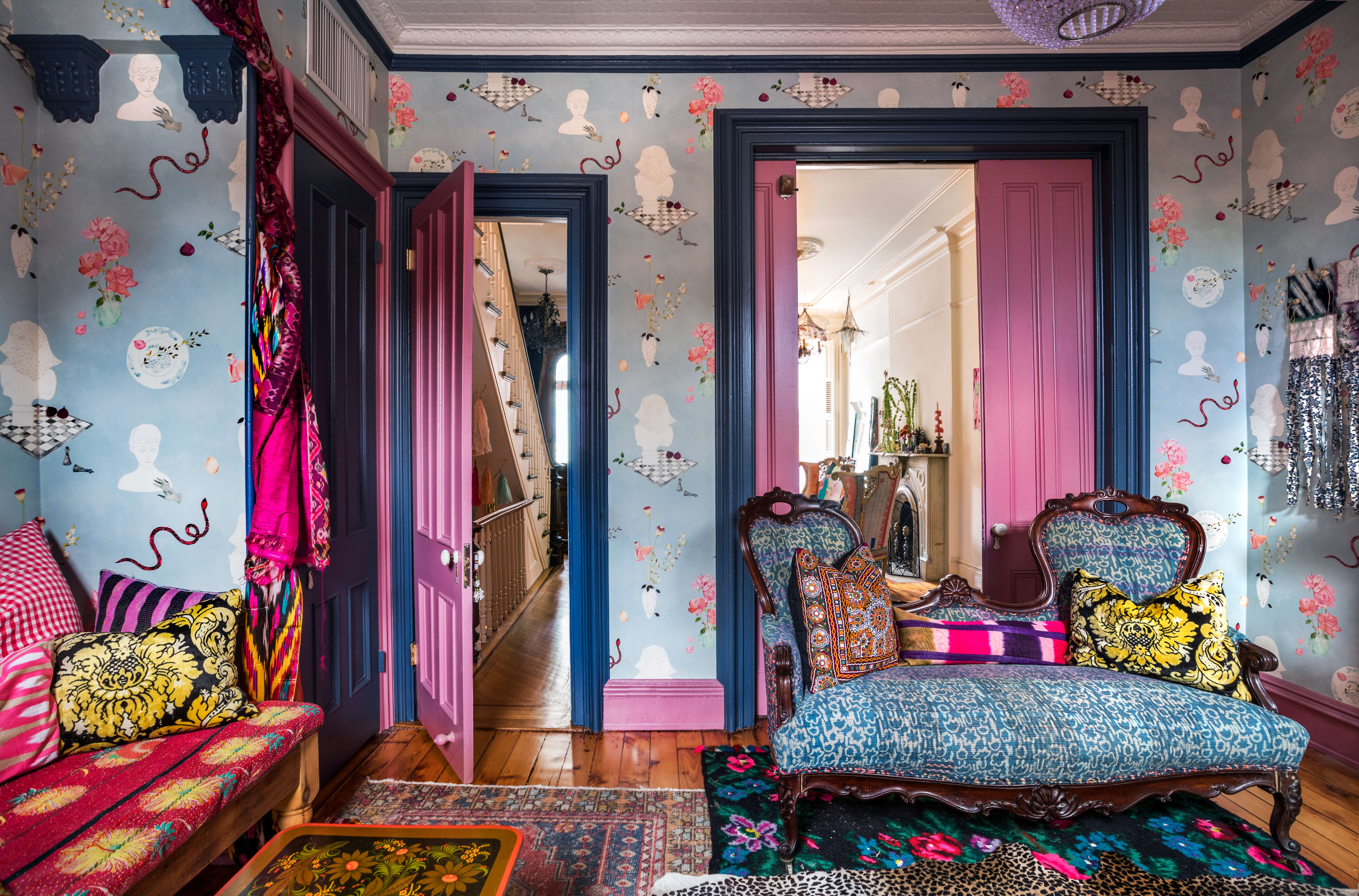
Bohemian Rhapsody: Layered With History, a Prospect Heights Brownstone Embraces Color
A framed photograph of a high-spirited Victorian couple in a donkey cart on holiday hangs in the front hall of Cara Silverman’s Prospect Heights brownstone. The sepia-toned image, found in the house when Silverman bought it, may well be of early homeowners. They might be surprised to recognize their brass doorknob and a bell-pull, which yields a resounding clang, still in place at the entry of the three-story row house nearly a century and a half later. But there they still are, augmented with later additions by another homeowner, a passionate 20th century brownstoner: a whimsical door handle in the shape of an elephant’s trunk, a mail slot reading “LETTERS,” and a plaque with an Art Nouveau goddess.
—
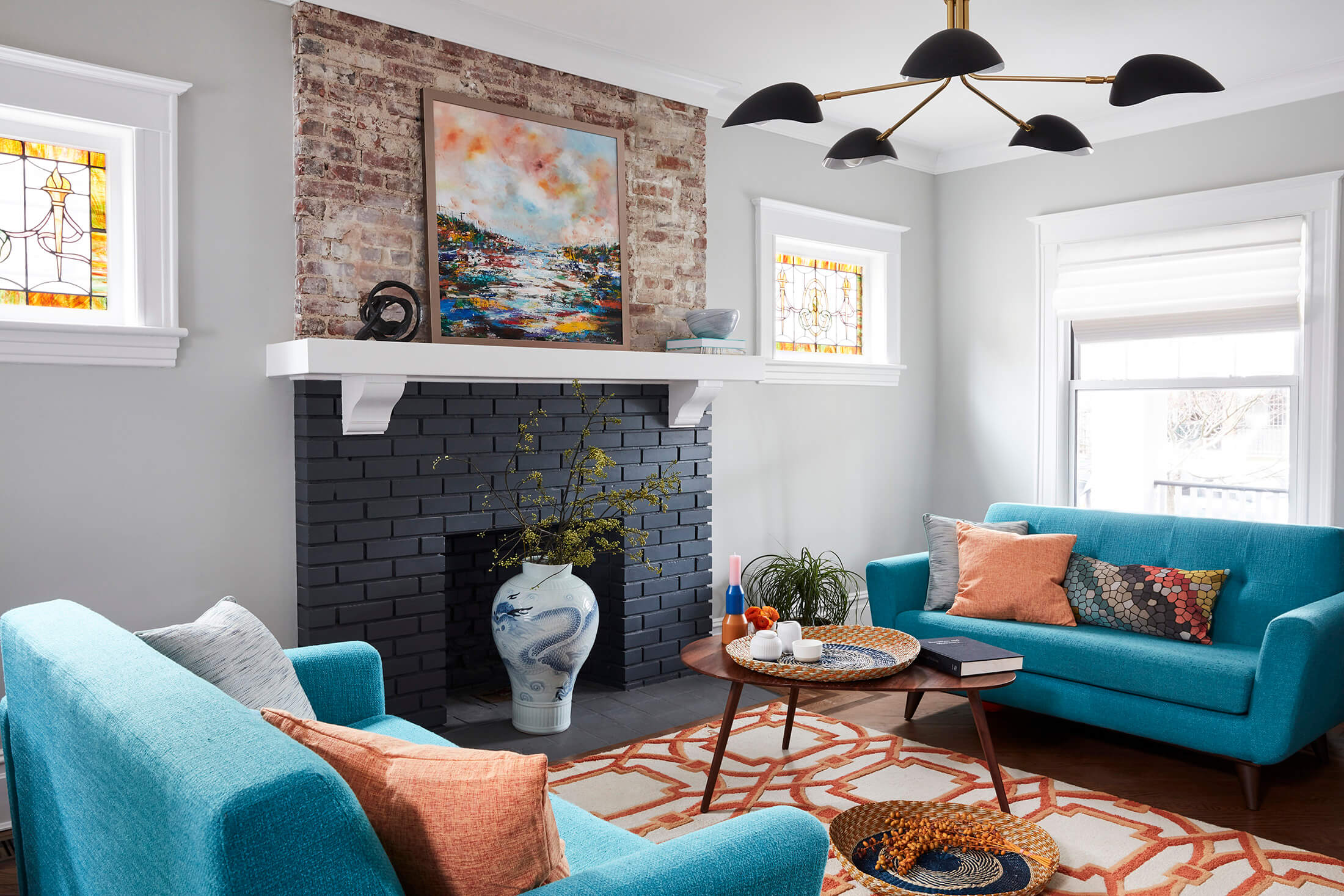
Blithe Spirits: An Inviting, Colorful Ditmas Park House Is a Pick-Me-Up
To Keita Turner, interior design is about much more than merely boosting function or adding decorative pizzazz. In all her projects, including the fresh and lively Ditmas Park house she orchestrated for a couple just launching a family, she aims for nothing less than to “uplift the spirit.” “People don’t often realize what an important role their surroundings play in their emotional satisfaction, for better or worse,” says Turner, a refugee from the fashion industry who switched over to interior design in 2000 and has built an impressive roster of commercial and residential clients in the tri-state area and beyond. “Good interior design can enhance your life.”
—
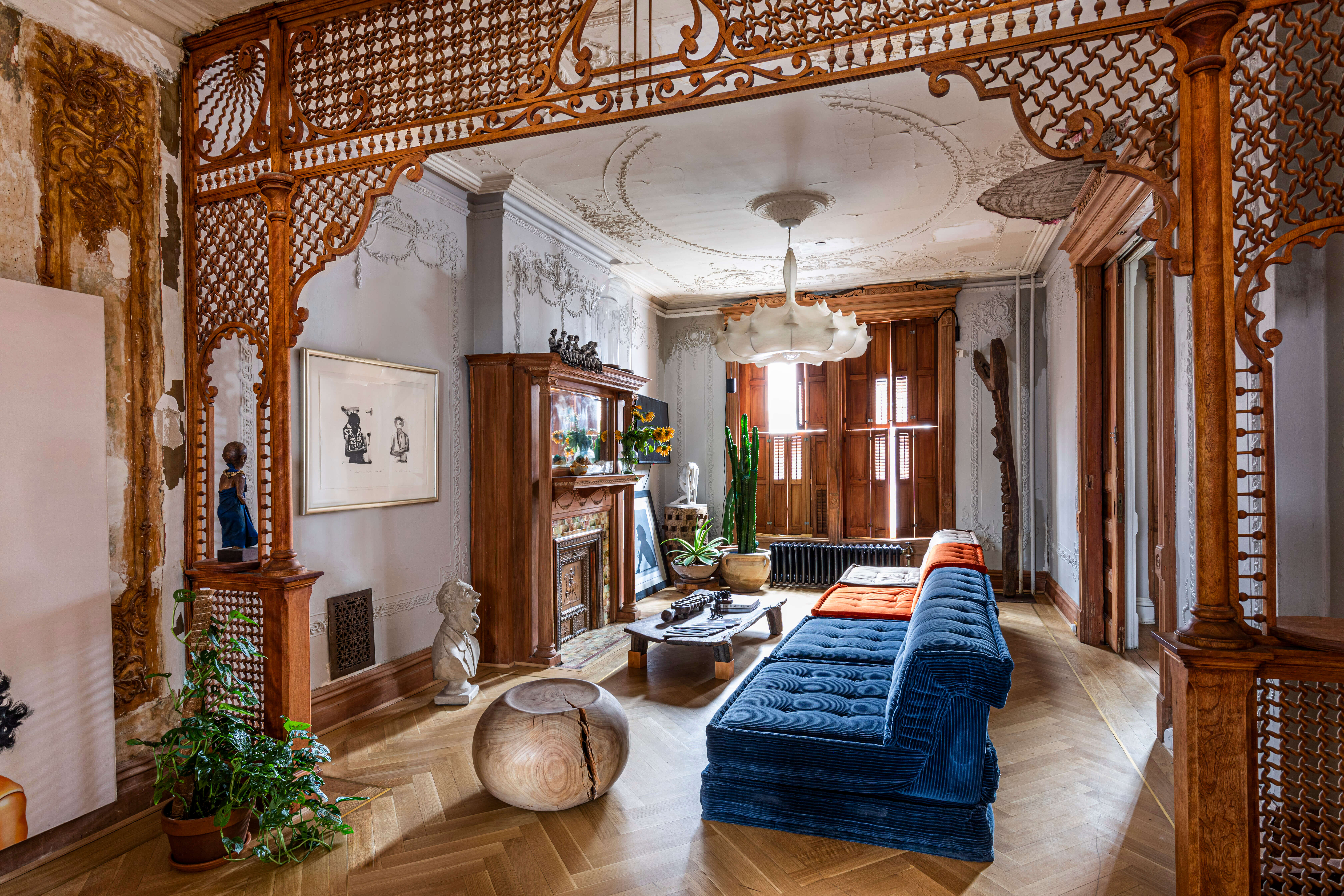
A Bed Stuy Homeowner Makes a Plasterwork Palace Her Own
Shelley Victory gestured into the front parlor of her limestone townhouse, whose walls and ceilings are covered with elaborate plaster relief decoration in varying states of repair, from nil to perfection. “Look at this plasterwork!” she exclaimed. “Isn’t it obnoxious?”
She doesn’t mean obnoxious in a pejorative sense, of course. It’s Victory’s synonym for fabulous, over-the-top, beyond belief. And indeed it is.
—
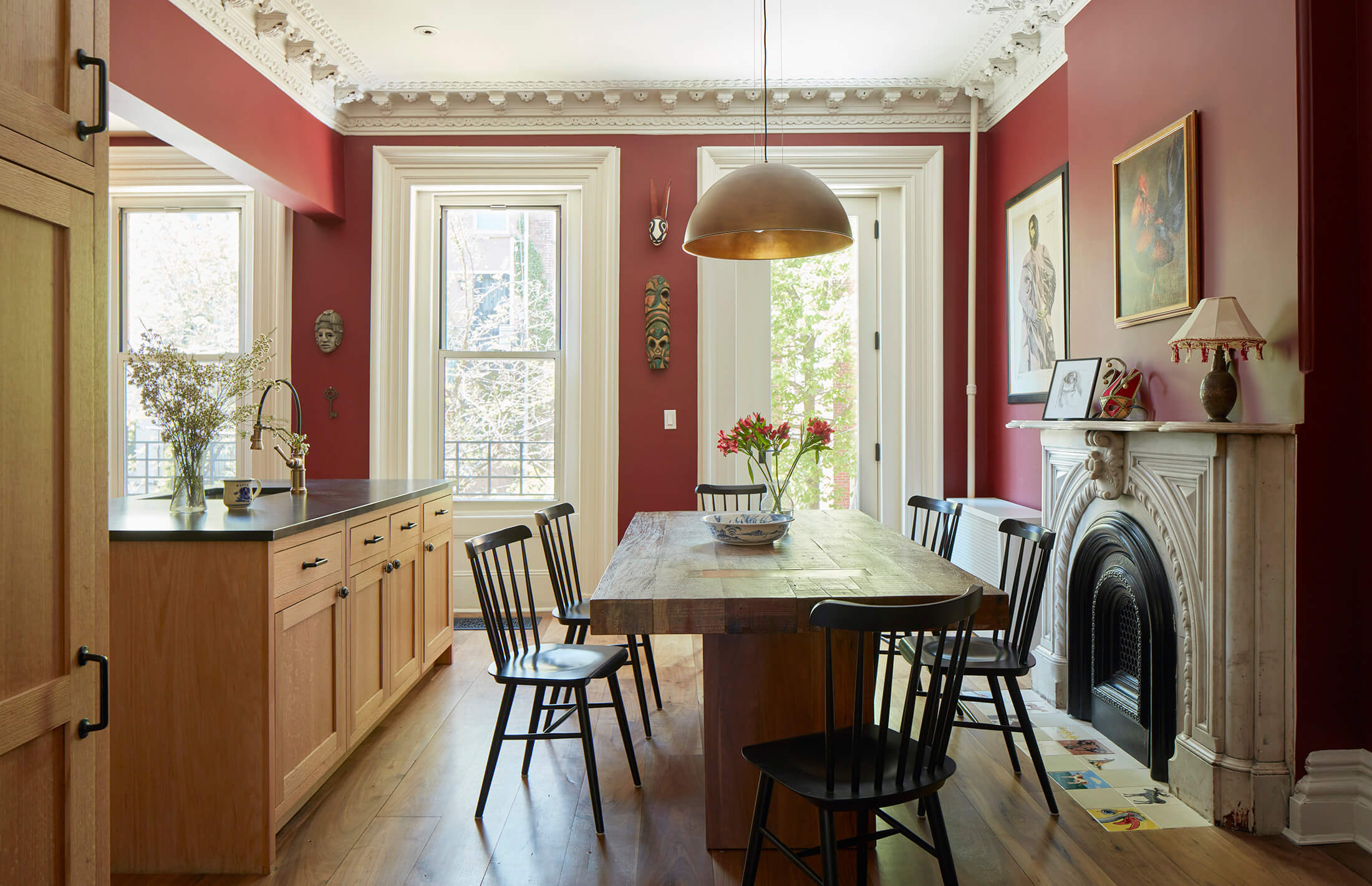
Vibrant Vibes Enliven a Fort Greene Brownstone
Burgundy, mustard, Turkish blue – the rooms in Jackie and Jacob Baskin’s 1870s brownstone roam the paint chart, giving them exactly what they were after: immersive color. “We’d only lived in apartments before, so we thought, ‘If we’re going to spend an unconscionable amount of money buying and renovating our forever house, we might as well make it fun,’” said Jackie, a television documentary producer originally from Chicago. Jacob, a computer programmer who grew up in Toronto, where his parents have a house with a red dining room, was all in. “When I think about welcoming, friendly houses,” he says, “I think of bold colors.”
—
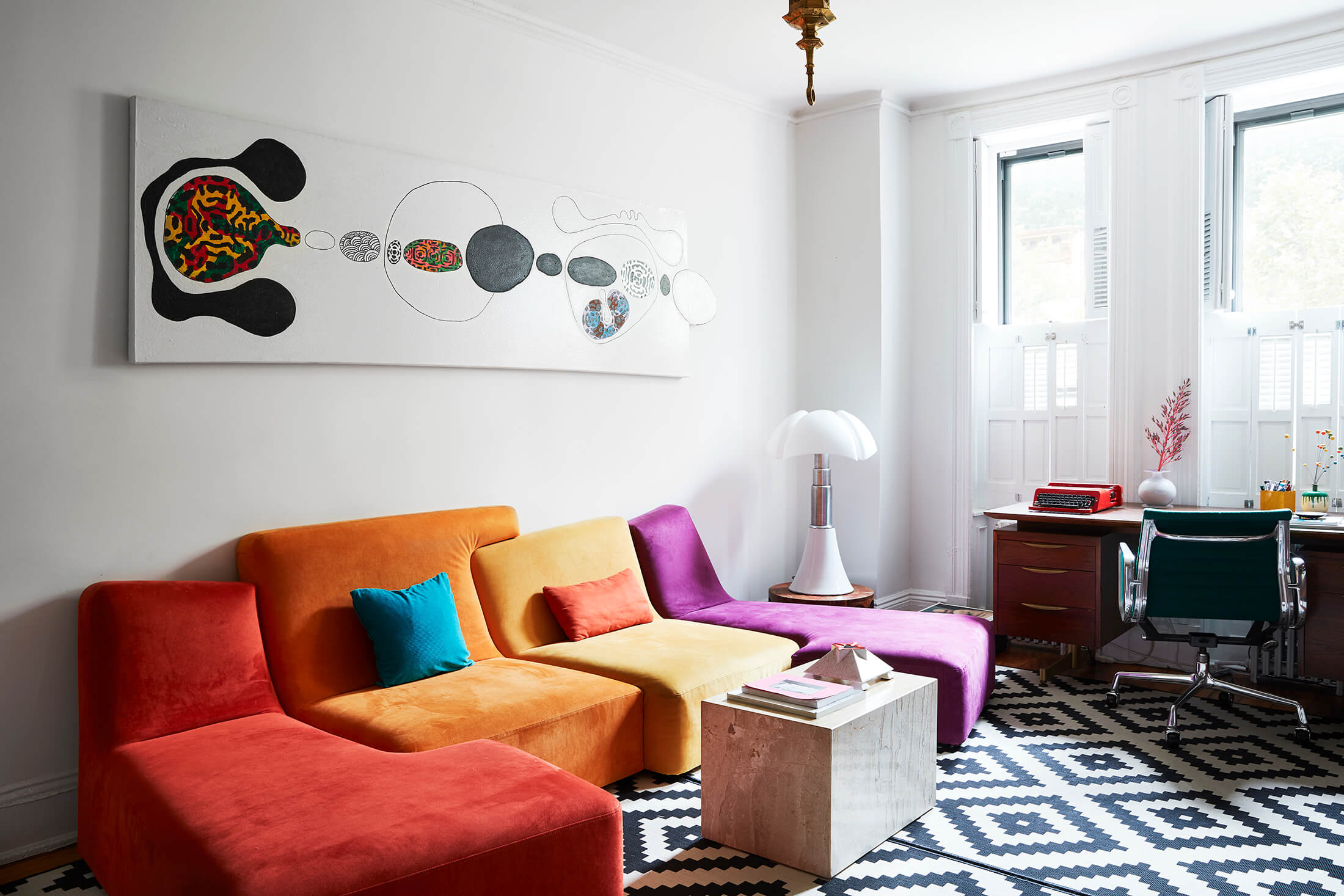
Going Back Home: Artist Paul Sue-Pat Brings Life to a Bed Stuy Townhouse
When Paul Sue-Pat first came to Bed Stuy, he wasn’t sure he liked the neighborhood. Born in Kingston, Jamaica, he had arrived in New York after stops in London, Miami, and Connecticut with dreams of becoming an artist. His small studio was located on the first floor of a building on West 4th Street in Manhattan; the rent was $200 a month. He was struggling but happy, scraping out a living. But when the building was sold, the new owners wanted him and the other artists who had studio space there to move out. When the landlord came with what Sue-Pat calls a “bag of cash,” he decided to follow the advice of some artist friends and move to Brooklyn. “I took the money and ran,” he said with a laugh.
—
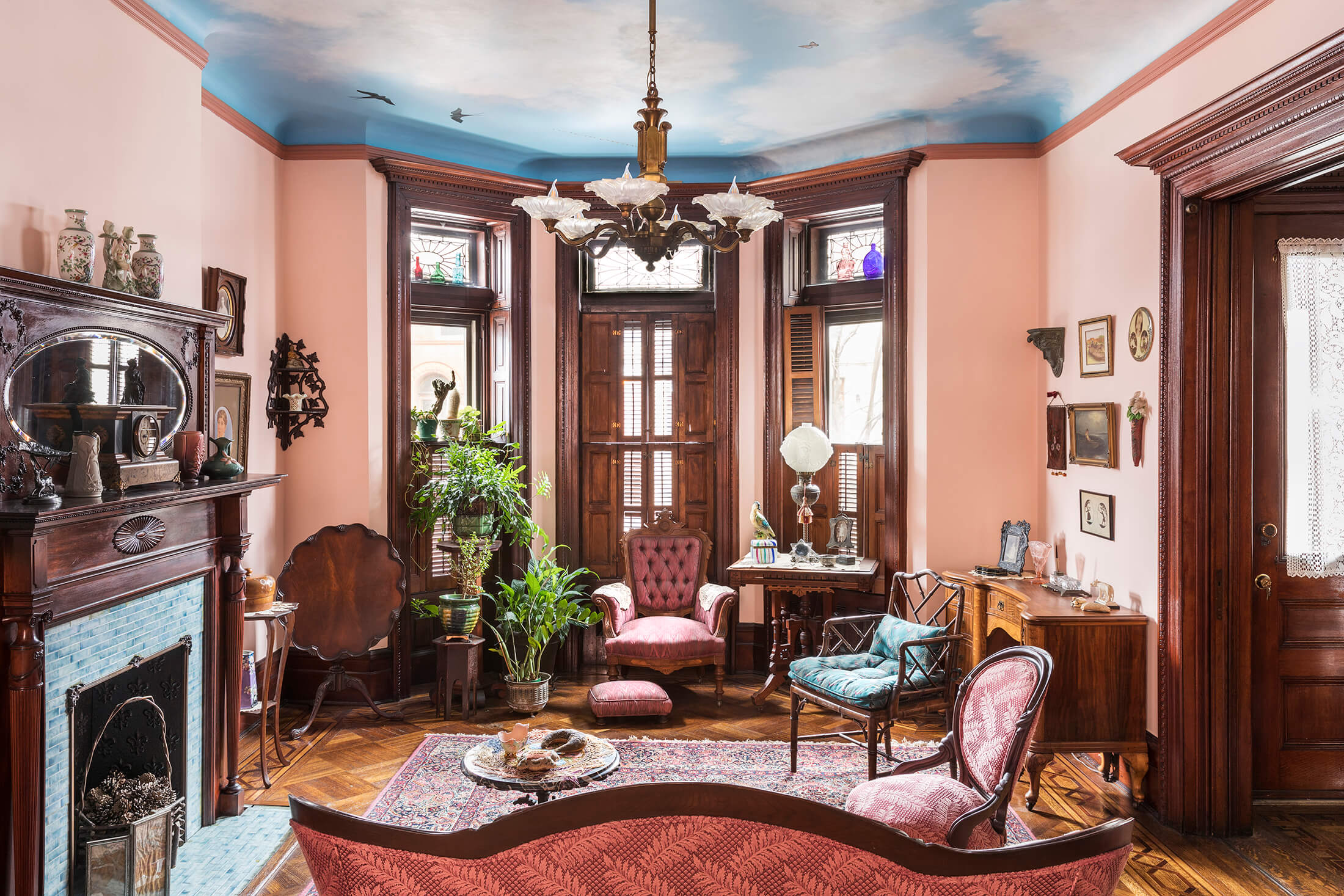
Schoolteacher’s Coup: Seeking an Integrated Neighborhood, a Couple Restores an 1899 House
Prospect-Lefferts Gardens was unusual when Elaine and Bob first visited in 1974 and it remains unusual today because it is racially integrated. “Saul Alinksy said integration is the brief period between when the first Black people move to a neighborhood and the last white people move out,” said Bob, quoting the famous activist. “That didn’t happen here.”
—
Related Stories
- Old Meets New in Workstead’s Meticulously Designed and Crafted Brooklyn Interiors
- 11 Brooklyn Creatives Make a Townhouse Their Own
- Making History: A Community Writing Project Brings Together a Brooklyn Neighborhood
Email tips@brownstoner.com with further comments, questions or tips. Follow Brownstoner on Twitter and Instagram, and like us on Facebook.









What's Your Take? Leave a Comment